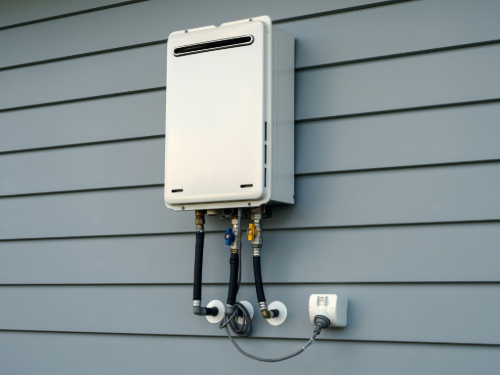Tankless Water Heaters: Maintenance Recommendations and How-To's

How to Perform Maintenance on Your Tankless Water Heater: A Complete Guide
Tankless water heaters are fantastic appliances — they’re energy efficient, save space, and deliver hot water on demand. But like any hardworking system in your home, they need regular maintenance to keep running at their best. Neglecting maintenance can lead to performance issues, a shortened lifespan, and costly repairs.
The good news? Maintaining a tankless water heater isn’t overly complicated, and with a little time and attention, you can keep it operating smoothly for years. In this guide, we’ll walk you through everything you need to know.
Why Maintenance Matters
Even though tankless units don’t store gallons of water like traditional heaters, minerals from the water (especially if you have hard water) can build up inside the system. Over time, scale deposits can clog the heat exchanger, reducing efficiency and potentially causing the unit to overheat or fail. Regular maintenance:
- Improves performance and efficiency
- Extends the life of your unit
- Helps maintain your warranty
- Prevents costly repairs or replacements
How Often Should You Service a Tankless Water Heater?
Most manufacturers recommend professional servicing once a year. If you live in an area with very hard water, you might need to perform certain maintenance tasks every 6 months.
Basic Tools and Supplies You’ll Need
- Submersible pump
- Two hoses (garden hoses typically work)
- A 5-gallon bucket
- White distilled vinegar or a commercial descaling solution
- A Phillips screwdriver
- Clean cloths or towels
- Water heater service manual (always handy!)
Tip: Always turn off the power and water supply before starting any maintenance.
Step-by-Step Maintenance Guide
1. Power Down and Disconnect
- Turn off the unit’s power (electric or gas).
- Shut off the water supply valves (both hot and cold) to isolate the heater.
- Turn off the gas supply if you have a gas-powered unit.
- Open a hot water tap in your home for a few seconds to relieve pressure.
2. Remove and Clean the Air Intake Filter
Most units have a small air intake filter to keep dust and debris out of the system.
- Locate the filter (refer to your manual).
- Remove it carefully.
- Rinse it with clean water and dry thoroughly before reinstalling.
3. Flush and Descale the System
Set Up the Flush
- Attach one hose to the cold water service port (marked in blue) and the other to the hot water service port (marked in red).
- Place both hose ends into the 5-gallon bucket.
- Connect the pump to the hose on the cold side.
Descale
- Fill the bucket with about 4 gallons of white distilled vinegar (or use a manufacturer-approved descaling solution).
- Turn on the pump to circulate the vinegar through the heater for about 45 minutes to 1 hour.
- This process breaks down and flushes out scale buildup inside the heat exchanger.
Rinse
- After descaling, dump the vinegar.
- Refill the bucket with clean water and flush the system for 5–10 minutes to rinse out any vinegar or chemicals.
4. Clean the In-Line Water Filter
Your tankless heater has a small filter where the cold water enters the unit.
- Locate the in-line screen filter.
- Remove it (you may need pliers).
- Rinse under running water to remove sediment and debris.
- Reinstall it carefully.
5. Reconnect and Restart
- Close the service ports.
- Disconnect the hoses.
- Open the cold and hot water supply valves.
- Turn on the gas supply (if applicable).
- Power the unit back on.
6. Check for Leaks and Proper Operation
- Run a hot water tap for a few minutes.
- Listen for strange noises, look for leaks, and ensure the water is heating correctly.
- If everything looks good, you’re done!
Additional Tankless Water Heater Care Tips
- Inspect the venting system annually for any blockages or corrosion.
- Watch for error codes: Modern units will display alerts if maintenance is needed.
- Keep the area clean: Ensure nothing blocks the airflow around your unit.
- Install a water softener if you have hard water. This can significantly reduce scaling issues.
When to Call a Professional
While DIY maintenance is very doable, there are times you’ll want a pro:
- Annual deep servicing (especially for gas models)
- If you notice leaks, strange sounds, or inconsistent hot water
- Error codes you can’t clear yourself
- Upgrading or replacing major parts
Final Thoughts
A little regular TLC goes a long way with your tankless water heater as well as for your tanked water heater maintenance requirements. By spending just an hour or so once a year (or twice if you have hard water), you can protect your investment, keep your hot water flowing efficiently, and avoid unpleasant surprises. Plus, it’s a satisfying feeling to know you’re helping your home run like a well-oiled machine!
